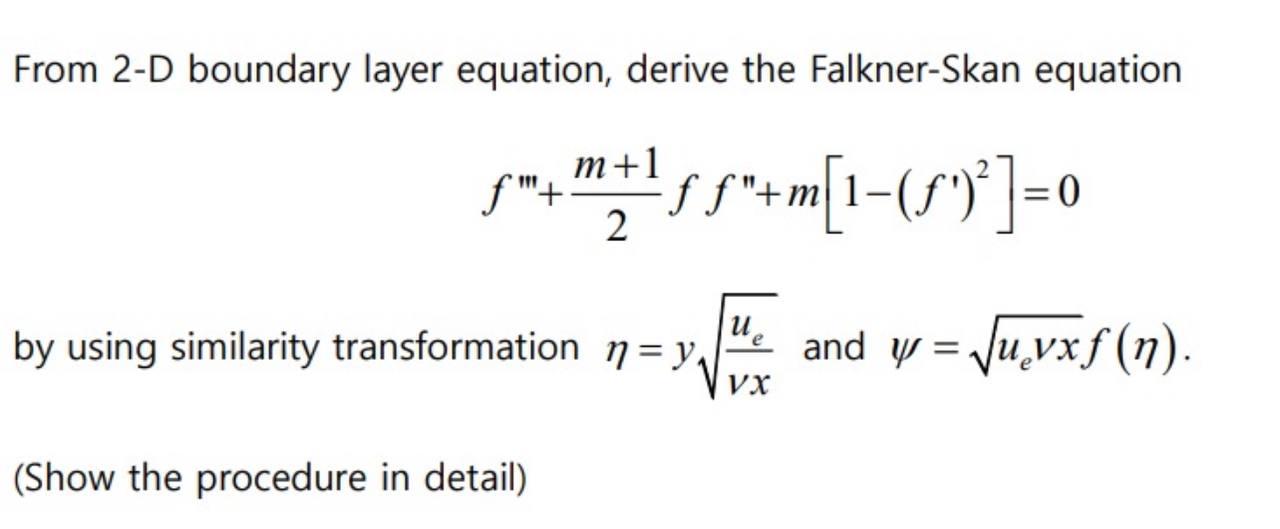Question
From 2-D boundary layer equation, derive the Falkner-Skan equation f + + +m[1(^)] = 0 m+1 2 ue by using similarity transformation n =

From 2-D boundary layer equation, derive the Falkner-Skan equation f" + + "+m[1(^)] = 0 m+1 2 ue by using similarity transformation n = y VX (Show the procedure in detail) and y = uvx(n).
Step by Step Solution
There are 3 Steps involved in it
Step: 1
PROCEDURE IN DETAILS To derive the FalknerSkan equation from the 2D boundary layer equation we start ...
Get Instant Access to Expert-Tailored Solutions
See step-by-step solutions with expert insights and AI powered tools for academic success
Step: 2

Step: 3

Ace Your Homework with AI
Get the answers you need in no time with our AI-driven, step-by-step assistance
Get StartedRecommended Textbook for
Modern Classical Physics Optics Fluids Plasmas Elasticity Relativity And Statistical Physics
Authors: Kip S. Thorne, Roger D. Blandford
1st Edition
0691159025, 978-0691159027
Students also viewed these Accounting questions
Question
Answered: 1 week ago
Question
Answered: 1 week ago
Question
Answered: 1 week ago
Question
Answered: 1 week ago
Question
Answered: 1 week ago
Question
Answered: 1 week ago
Question
Answered: 1 week ago
Question
Answered: 1 week ago
Question
Answered: 1 week ago
Question
Answered: 1 week ago
Question
Answered: 1 week ago
Question
Answered: 1 week ago
Question
Answered: 1 week ago
Question
Answered: 1 week ago
Question
Answered: 1 week ago
Question
Answered: 1 week ago
Question
Answered: 1 week ago
Question
Answered: 1 week ago
Question
Answered: 1 week ago
Question
Answered: 1 week ago
Question
Answered: 1 week ago
View Answer in SolutionInn App



